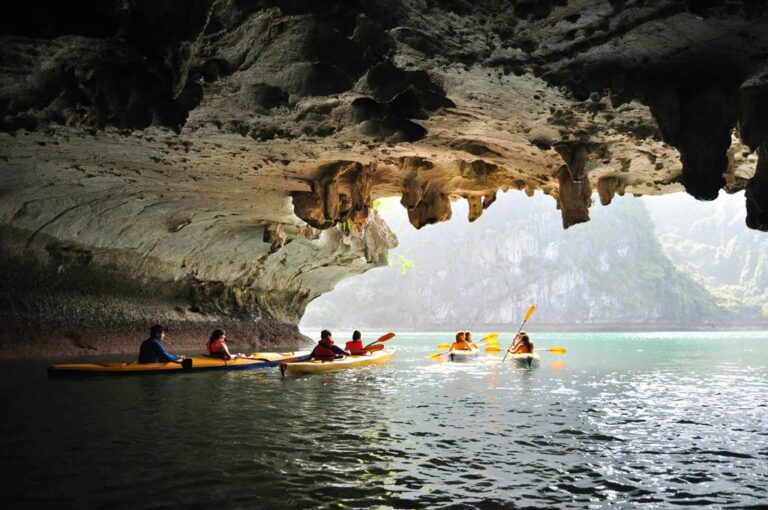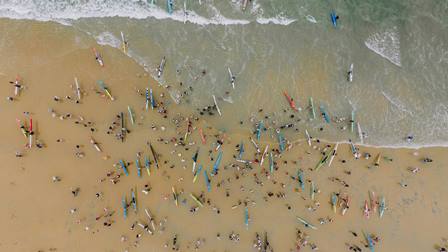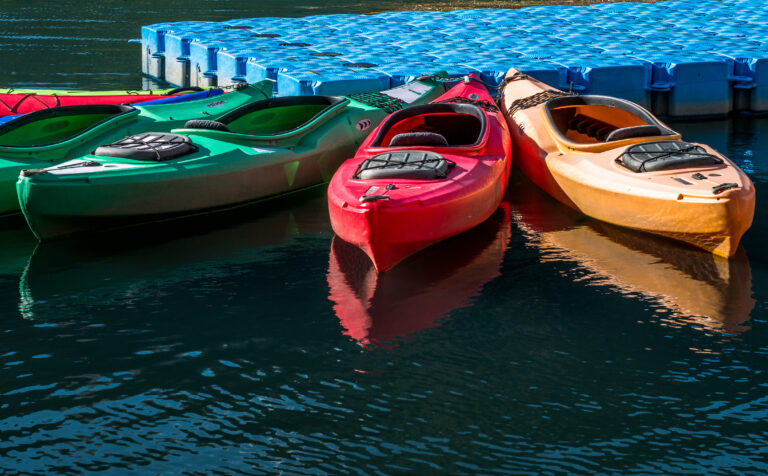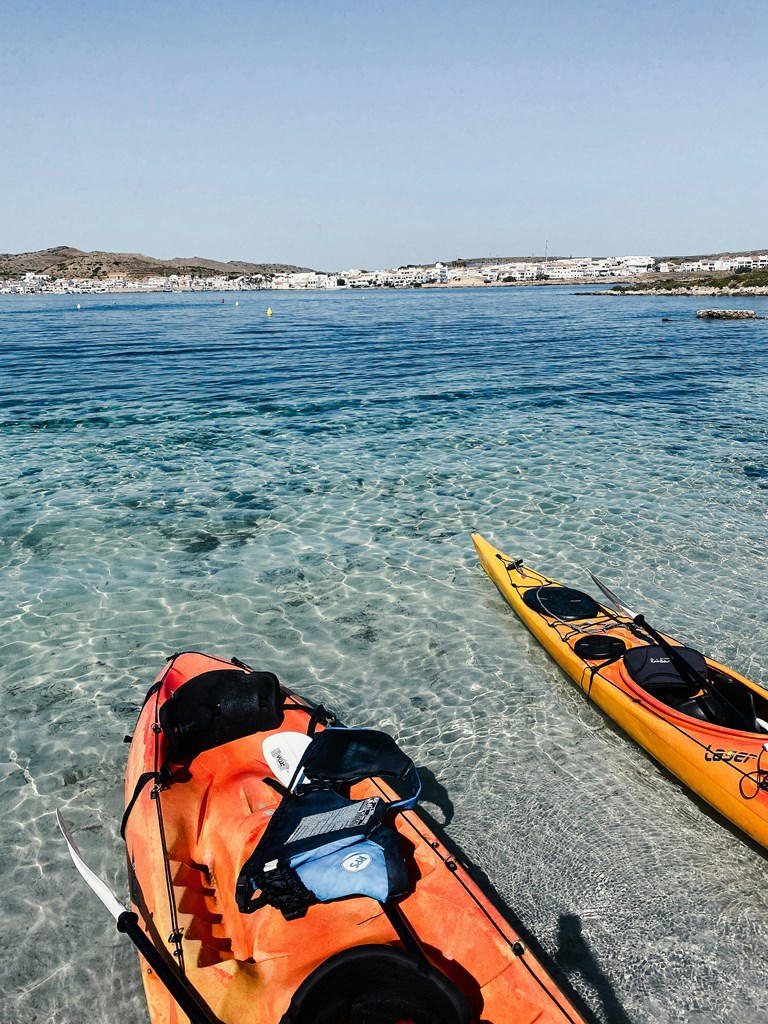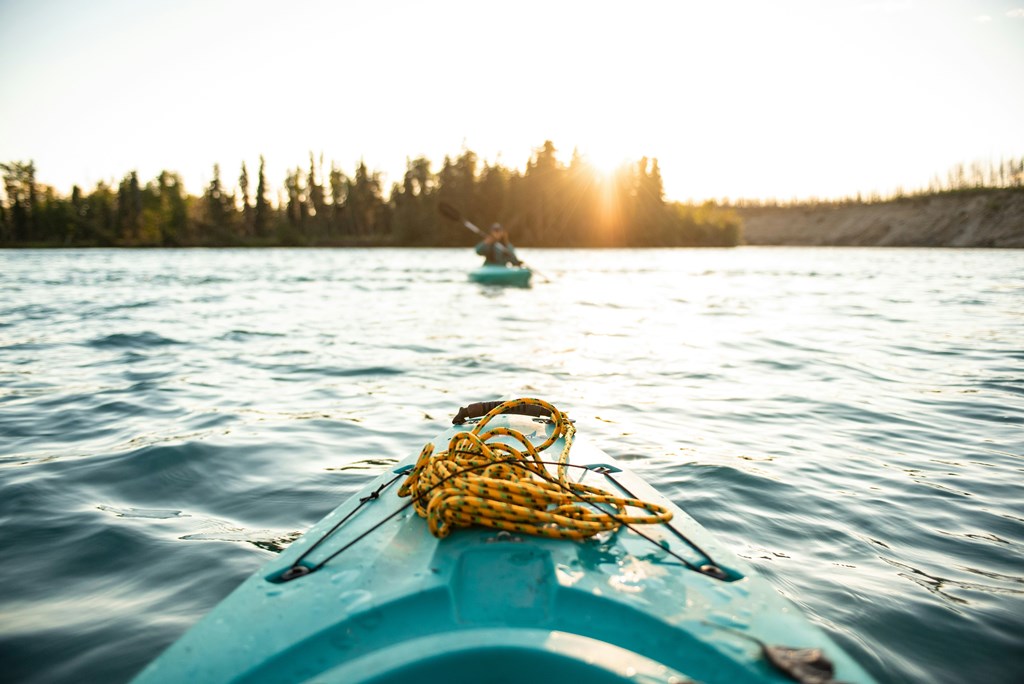
Kayaking offers a unique perspective on the world, gliding past breathtaking scenery and serene wildlife. But capturing those moments perfectly with a camera can be a challenge. This guide, “Mastering Kayaking Photography for Stunning Shots,” will equip you with the essential tips and techniques to transform your kayaking adventures into stunning photographic memories. From mastering camera settings to navigating the challenges of paddling with a camera, we’ll guide you through everything you need to know to become a kayaking photography pro.
Let’s face it, unexpected dips are part of the kayaking experience (Murphy’s Law strikes again!). Before we dive into capturing those epic shots, let’s ensure your camera or phone is properly protected against an untimely swim. We’ll show you how to safeguard your gear so you can focus on capturing stunning kayaking memories.
Preparing Your Camera for Kayaking Adventures
Before you embark on your kayaking adventure and start snapping away, it’s crucial to ensure your camera is prepped for success. Here’s a quick pre-paddle checklist:
- Battery Power: A dead camera is a photographer’s worst nightmare. Pack a fully charged battery and consider bringing a spare, especially for longer outings.
- Storage Space: Memories are precious, but digital storage fills up fast. Ensure you have enough memory card space to capture all your kayaking adventures. If you plan on shooting a video, factor in the additional storage requirements.
- Camera Settings: Double-check your camera settings! Avoid the disappointment of capturing breathtaking scenery only to find it ruined by incorrect settings. Make sure you’ve switched out of “indoor light” mode and adjusted for the outdoor conditions you’ll encounter. Remember, a few moments of pre-trip preparation can save you photo frustration later.
Don’t Forget the Fuel: Staying Hydrated for Kayaking Photography Success
Even the most seasoned paddlers and photographers can fall victim to a common enemy – dehydration. When you’re focused on capturing the perfect shot or navigating calm waters, it’s easy to forget to fuel your body. Here’s why staying hydrated is paramount for successful kayaking photography:
- Sharp Focus: Dehydration can lead to headaches, fatigue, and difficulty concentrating. Staying hydrated keeps your mind clear and focused, allowing you to capture those fleeting photo opportunities.
- Physical Stamina: Kayaking itself requires exertion, and adding photography to the mix increases your physical demands. Proper hydration ensures you have the energy to paddle efficiently and remain steady for those perfect shots.
- Enjoyment Factor: Nobody enjoys a kayaking trip feeling parched and sluggish. Adequate hydration keeps your energy levels up and allows you to fully enjoy the experience, both on the water and behind the lens.
Pro Tip: Pack a good cooler or a sturdy beverage tumbler filled with refreshing water or your favourite hydrating drink. Take regular sips throughout your kayaking adventure to stay on top of your hydration needs. Remember, a happy and hydrated photographer is a photographer who captures stunning shots!
Hands-Free Photography: The Power of Camera Mounts
Imagine capturing that breathtaking sunrise over the water, or snapping a hilarious action shot of your friend fumbling with their paddle – all without interrupting your paddling rhythm. This is the magic of camera mounts!
Investing in at least one affordable camera mount is a game-changer for kayaking photography. Here’s why:
- Free Your Hands: Paddling, steering, and adjusting are all essential parts of kayaking. Camera mounts keep your hands free for these tasks, allowing you to capture spontaneous moments without having to put down your paddle.
- Perfect Positioning: The right camera mount ensures optimal shooting angles. Whether you’re using a smartphone, GoPro, or DSLR, a mount allows you to position your camera for stunning compositions, capturing emotions and action at just the right time.
- Variety is Key: There’s a wide range of camera mounts available, from simple clip-on options for smartphones to more robust mounts for heavier cameras. Choosing the right mount depends on your camera type and desired shooting style.
By incorporating a camera mount into your kayaking gear, you’ll unlock a whole new level of photographic freedom and capture stunning memories without sacrificing your paddling enjoyment.
Keep Your Camera Close: Accessibility is Key for Capturing Memories
Imagine paddling along, surrounded by breathtaking scenery, when the perfect photo opportunity arises. But then, disaster strikes – you fumble through your gear, frantically searching for your camera, only to miss the golden moment. Don’t let this happen to you! Here’s why keeping your camera accessible is crucial for successful kayaking photography:
- Capture the Unexpected: The beauty of kayaking photography lies in capturing spontaneous moments. By having your camera readily available, you’ll be prepared to seize fleeting opportunities for stunning shots.
- Safety First: Security goes hand-in-hand with accessibility. Invest in a waterproof phone bag or a bungee tether for your camera. This not only keeps your gear safe from an accidental swim but ensures it’s always within easy reach, eliminating the risk of it ending up lost at the bottom of the water.
- Time is of the Essence: The best shot often disappears as quickly as it appears. Having a camera mount or a waterproof phone case tether attached to your life jacket or kayak deck allows you to grab your camera in a split second, ensuring you never miss that epic photo opportunity.
By investing in these simple solutions, you’ll transform yourself from a frustrated photographer struggling to find your gear into a kayaking photography pro, capturing unforgettable memories on every paddling adventure.
Spend a Moment: Familiarize Yourself with Your Camera
Let’s be honest, the “auto” setting on your camera or phone is like training wheels on a bike – it gets you going, but it limits your potential. To capture truly stunning kayaking photos, it’s time to ditch the auto mode and unlock the hidden powers of your device!
Here’s why spending a few minutes getting to know your camera better will pay off in dividends:
- Unleash Your Creativity: Auto mode takes the creative control away from you. Learning about your camera’s features, like aperture, shutter speed, and ISO, allows you to manipulate light, control depth of field, and achieve stunning artistic effects.
- Unlock Your Phone’s Potential: Modern smartphones boast impressive camera capabilities, often untapped by users. Explore your phone’s camera settings and discover features like HDR for capturing vibrant landscapes or “portrait mode” for those close-up wildlife encounters.
- Master the Macro: Many point-and-shoot cameras have a hidden gem – a “macro” setting (often symbolized by a flower icon). This setting allows you to capture incredible close-up details, from the intricate markings on a fish to the lure dangling enticingly from its mouth.
Pro Tip: Dedicate a short while before your kayaking trip to familiarize yourself with your camera’s manual mode or explore online tutorials specific to your phone model. This investment of time will transform you from a casual snapper to a kayaking photography master, capturing awe-inspiring shots that tell the story of your adventure.
Illumination & Subjects: Enhancing Your Photography
Kayaking offers a photographer’s dream – a front-row seat to nature’s breathtaking beauty. The interplay of light and water creates a canvas for stunning imagery, especially during the golden hours of dawn and dusk.
Harnessing the Power of Light:
- Early Bird Gets the Shot: Dawn and dusk boast the most captivating light for photography. Soft, diffused light creates a magical glow, enhancing the natural world’s vibrancy. This is also prime time for wildlife photography – many animals are most active during these periods, increasing your chances of capturing stunning wildlife encounters.
- The Balancing Act: Capturing stunning images in low light conditions requires a delicate balance between shutter speed, ISO, and aperture. A fast shutter speed freezes action, but it might not allow enough light to enter the camera. Conversely, a wide-open aperture (low f-number) may not provide sufficient depth of field, leaving some elements out of focus, especially when dealing with foreground and background objects at varying distances.
Mastering the Elements:
- Dodge the Midday Sun: While the sun-drenched hours might seem ideal, harsh midday light creates flat, low-contrast images that lack visual excitement. Opt for paddling adventures during the golden hours for the most captivating photos.
- Sun Protection is Key: Kayaking often means extended exposure to the sun. Protect yourself with sun-protective clothing like a Sun Jammer or a UPF-rated performance shirt. Don’t forget a wide-brimmed hat and polarized sunglasses. They’ll shield your eyes from the sun’s glare, keep you cool, and allow you to see further and clearer on the water, enhancing your overall kayaking and photography experience.
By understanding the impact of light and taking steps to protect yourself from the elements, you can transform your kayaking adventures into stunning photographic journeys, capturing the magic of nature with every click of the shutter.
Maintain Stability for Perfect Shots
A crucial element of capturing stunning kayaking photos often gets overlooked – camera stability. Shaky shots can turn a potentially breathtaking image into a blurry mess, leaving you disappointed. Here’s how to ensure your camera stays steady and delivers crisp, clear photos:
- Embrace the Camera Mount: Remember why camera mounts are your kayaking photography best friend? They keep your camera secure and eliminate camera shake caused by unsteady hands. This is especially important in low-light conditions, where slower shutter speeds are necessary.
- The Power of Breath Control: Take a deep breath and hold it just before snapping the photo. This simple technique minimizes camera movement during the crucial moment of capture.
- Blaming the Gear vs. Blaming the Technique: It’s easy to point the finger at your camera or lens for blurry photos. However, in most cases, camera shake caused by the photographer is the culprit. Mastering breath control and utilizing camera mounts will significantly improve your shot stability.
Elevated Perspectives:
Sometimes, capturing unique compositions requires a higher vantage point. Here’s where a stand-up assist strap comes in handy. Important Safety Note: Only attempt standing on a kayak designed for this purpose, with a wider and longer hull for increased stability. Popular models known for their stand-up capabilities include the Shearwater 125, Yellowfin 120, Sea Ghost 130, and even the hybrid SUP Cubera 120.
Safety First: Always prioritize safety when kayaking. If you’re unsure about the stability of your kayak, avoid standing. Remember, a captivating photo is never worth compromising your safety.
Capturing Emotional Depth
Imagine paddling through a breathtaking landscape, the thrill of navigating rapids coursing through you, or the pure joy of landing a magnificent fish. Kayaking adventures are brimming with emotions, and capturing those moments goes beyond just scenery. It’s about storytelling through the lens of human experience.
Preserving the Emotional Journey:
- Beyond the Scenery: While capturing the beauty of your surroundings is important, it’s the human element that adds depth and emotional resonance to your kayaking photos. Don’t shy away from selfies or candid shots of your fellow paddlers. These moments of shared experience, captured in the evenings around a campfire or during rest breaks, become cherished memories you can revisit for years to come.
- Action Speaks Louder Than Words: A picture is worth a thousand words, and a well-timed photo can convey a whole spectrum of emotions. A furrowed brow as you navigate a challenging rapid, the exhilaration of casting a line, or the sheer delight of reeling in a catch – these expressions tell the story of your adventure without needing a single word.
The Art of Positioning:
- Shooting for Success: Capturing these fleeting moments of emotion requires the right positioning. Here’s where your trusty camera mount comes in. By having your camera secured on a mount, you can keep your hands free from paddling, casting, or manoeuvring your kayak. This allows you to react quickly and capture those priceless emotional snapshots without missing a beat.
By incorporating emotional storytelling into your kayaking photography, you’ll transform your photos from scenic snapshots into a captivating narrative. You’ll document not just the places you explore, but the feelings you experience along the way, creating a visual record of an unforgettable adventure.
Perfecting Positioning and Focus
Kayaking isn’t just a solo adventure; it’s often a shared experience with friends and fellow enthusiasts. Capturing these moments of camaraderie on the water requires not just technical skill but also an understanding of composition. Here’s how to ensure your photos of other paddlers are both technically sound and visually engaging:
Planning for the Perfect Shot:
- Time is of the Essence: Capturing authentic expressions and action requires quick thinking and good communication. If you have a specific shot in mind, politely ask your paddling companions for a few minutes’ notice to set up at your desired location. This allows you to prepare for the perfect composition before the moment unfolds.
Positioning for Success:
- Lighting Matters: Positioning yourself strategically is key. Whenever possible, situate yourself low to the water with the sun behind you. This eliminates harsh shadows and creates a more flattering light for your subjects.
- Manual Mode Mastery: (For DSLR users) Switching to manual mode allows you to take control of your camera’s settings. This gives you the flexibility to adjust shutter speed, aperture, and ISO to achieve optimal results.
- Depth of Field: Striking a balance between sharpness and background blur is crucial. A slightly closed aperture (achieved by using an f-stop value a few clicks above the widest setting) increases your depth of field, ensuring both your subject and the background remain sharp.
Pro Tip: Making the Catch Shine: (For fish photography) When capturing your fishing victories, utilize the longest optical zoom setting on your camera (avoid digital zoom). This technique, known as “compression,” condenses the background, creating a soft focus that draws the viewer’s eye directly to the star of the show – your impressive catch!
By mastering these composition techniques, you’ll transform your photos of fellow paddlers from ordinary snapshots to dynamic portraits that capture the essence of your shared kayaking adventures. Remember, a little planning and understanding of basic camera controls go a long way in creating stunning and memorable photos.
Identify Visual Elements That Distract
The viewfinder can be a deceiving world. What appears captivating to the naked eye can translate into a cluttered mess in a photograph. Here’s where the art of clean composition comes in – a skill that will take your kayaking photography to the next level.
The Art of Seeing Less:
- Less is More: While the scenery might be breathtaking, sometimes less is truly more. A clean composition, free from distracting elements, directs the viewer’s attention to the heart of your photo.
- Train Your Eye: Mastering clean composition takes practice. Develop a habit of scanning your viewfinder for potential distractions, such as a stray fishing rod creeping into the frame or a rogue tree branch seemingly sprouting from your friend’s head in a selfie.
Elevating Your Photos:
- Subject Isolation: By eliminating clutter in the background, you isolate your subject, making them the star of the show. This applies whether you’re capturing a majestic mountain range, a playful pod of dolphins, or a close-up portrait of your fellow paddler.
- Impactful Images: Clean compositions create a sense of order and visual harmony, making your photos more impactful and engaging for the viewer.
Becoming a Master Composer:
- Constant Vigilance: Always be mindful of potential distractions when composing your shots. A quick mental scan of your viewfinder can make the difference between a cluttered snapshot and a masterpiece.
- Practice Makes Perfect: The more you practice eliminating distractions and composing clean shots, the more intuitive it will become. Before long, you’ll be spotting and avoiding clutter instinctively, transforming your kayaking photography into a true art form.
By mastering clean composition, you’ll unlock the full potential of your kayaking imagery. Your photos will transcend mere snapshots, becoming captivating visual stories that transport the viewer right alongside you on your paddling adventures.
Embrace Stealth and Slow Movement
Just like a patient angler waiting for the perfect catch, a successful kayaking photographer knows the value of slowing down. Sure, there’s a sense of urgency when reeling in a fish, but capturing breathtaking photos requires a deliberate and thoughtful approach. Here’s why slowing down your paddling pace can unlock a world of photographic possibilities:
The Power of Patience:
- Double Duty: The principles of successful fishing translate beautifully to photography. A stealthy, slow approach allows you to anticipate photo opportunities without startling wildlife or disrupting the natural beauty of your surroundings.
- Planning Makes Perfect: Take a moment to pause and assess the scene before diving into rapid-fire shooting. Consider your subject matter, lighting conditions, and potential background distractions. This deliberate approach allows you to compose a well-balanced shot that tells a story.
- Steady Does It: Stability is crucial for capturing sharp, clear photos. Slowing down your paddling ensures a steady platform for framing your shot. This is especially important when dealing with challenging subjects like underwater fish photography or capturing a bird in mid-flight.
Beyond the Grin-and-Grip:
- Capturing the Moment: Let’s face it, the classic “grin-and-grip” fish photo can get repetitive. Slowing down allows you to capture the essence of the experience – the thrill of the catch, the fight of the fish, or the joy of spending time on the water with loved ones.
- Memories that Last: Stunning, evocative photos are more than just snapshots; they’re windows into unforgettable experiences. By investing time and patience in your photography, you’ll create lasting memories you can cherish and share for years to come.
Don’t settle for mediocrity; embrace the slow paddle! By incorporating these techniques, you’ll transform your photography from hurried snapshots to captivating stories, ensuring you capture the essence of your kayaking adventures, not just in your memory, but through the lens of your camera.
Conclusion
In conclusion, kayaking photography is an adventure in itself. By following these tips, you’ll be well on your way to capturing stunning shots that not only showcase the beauty of your surroundings but also tell the story of your paddling journey. So, slow down, embrace the moment, and get ready to transform your kayaking experiences into unforgettable photographic memories.

